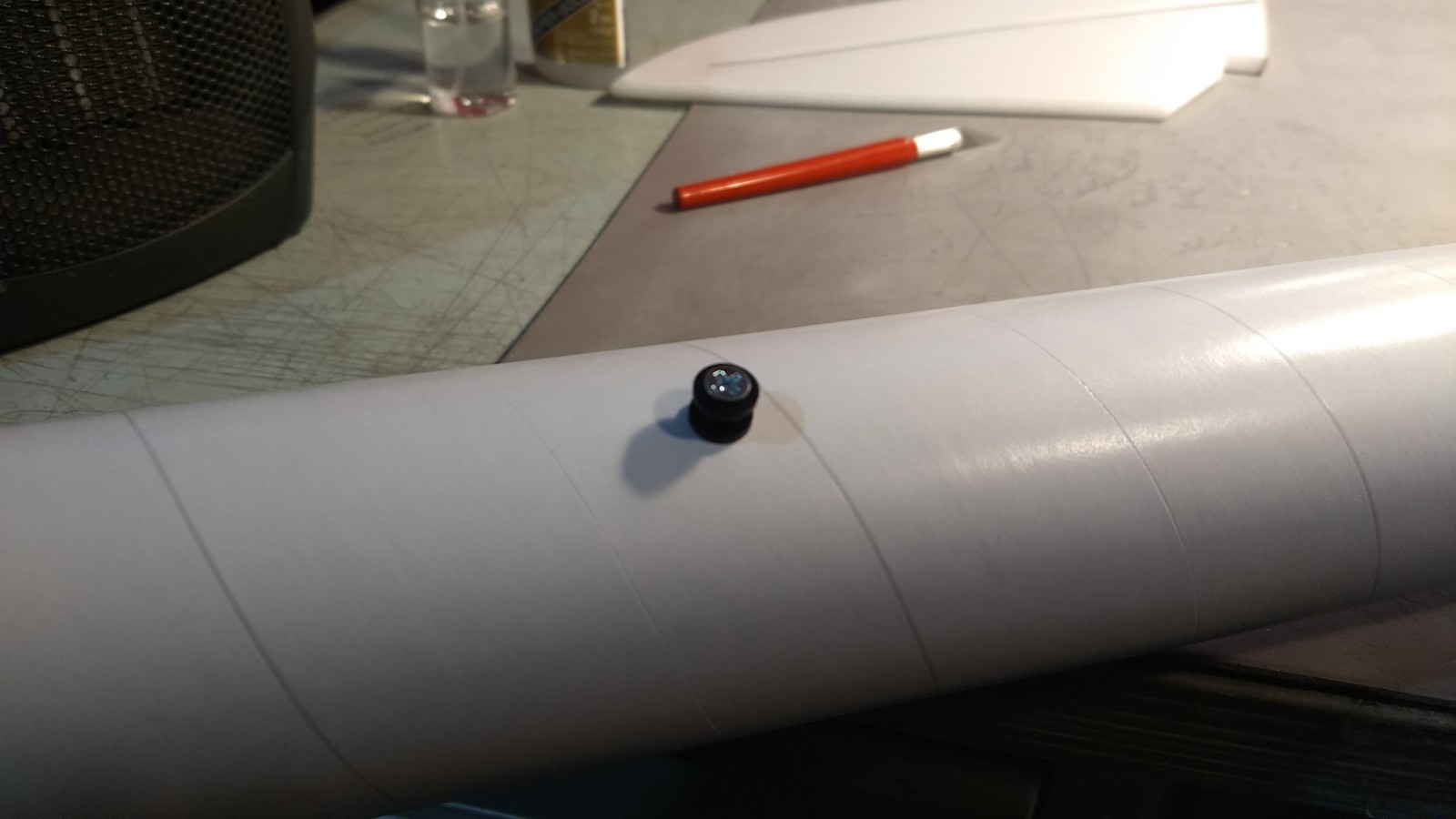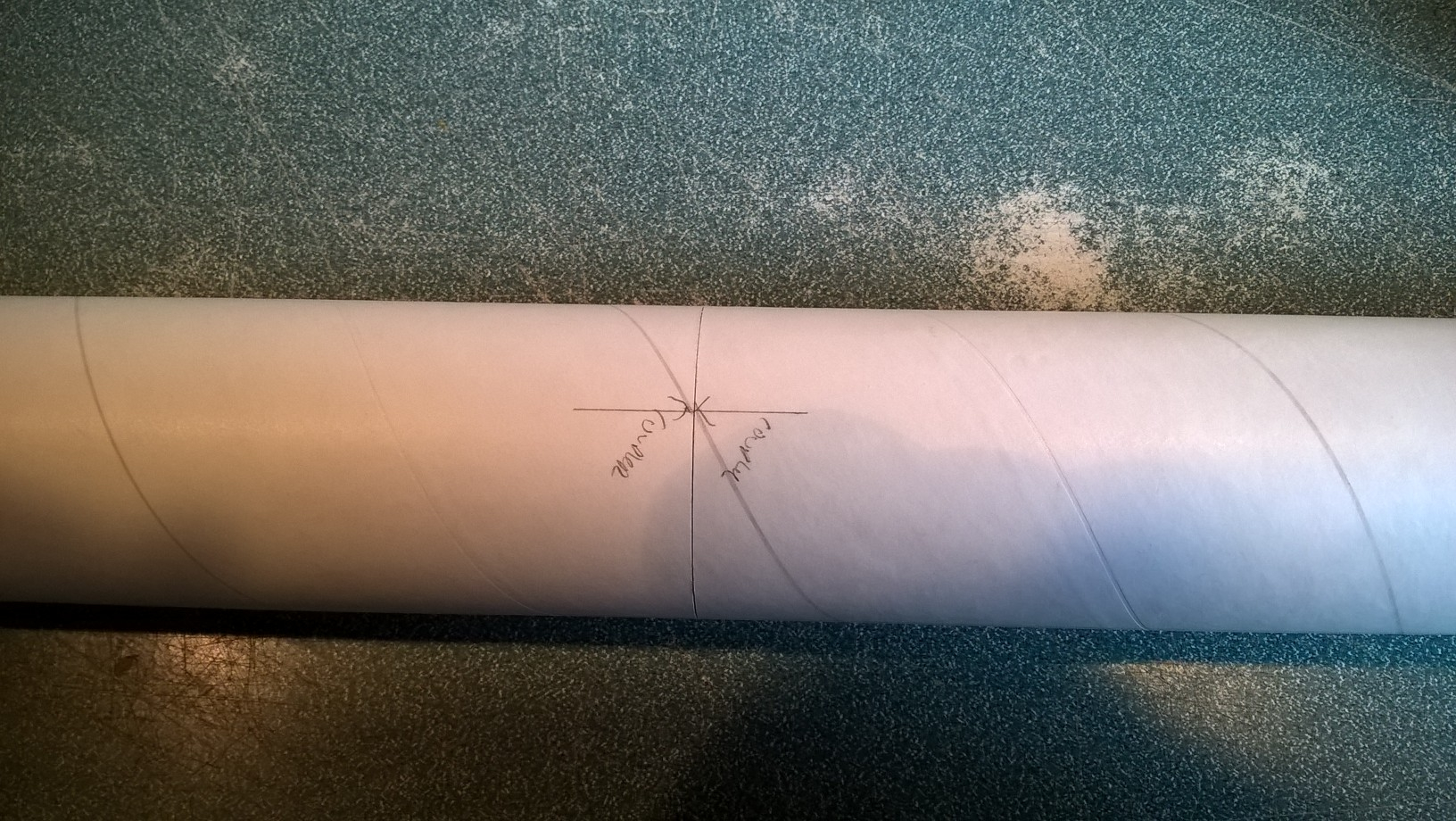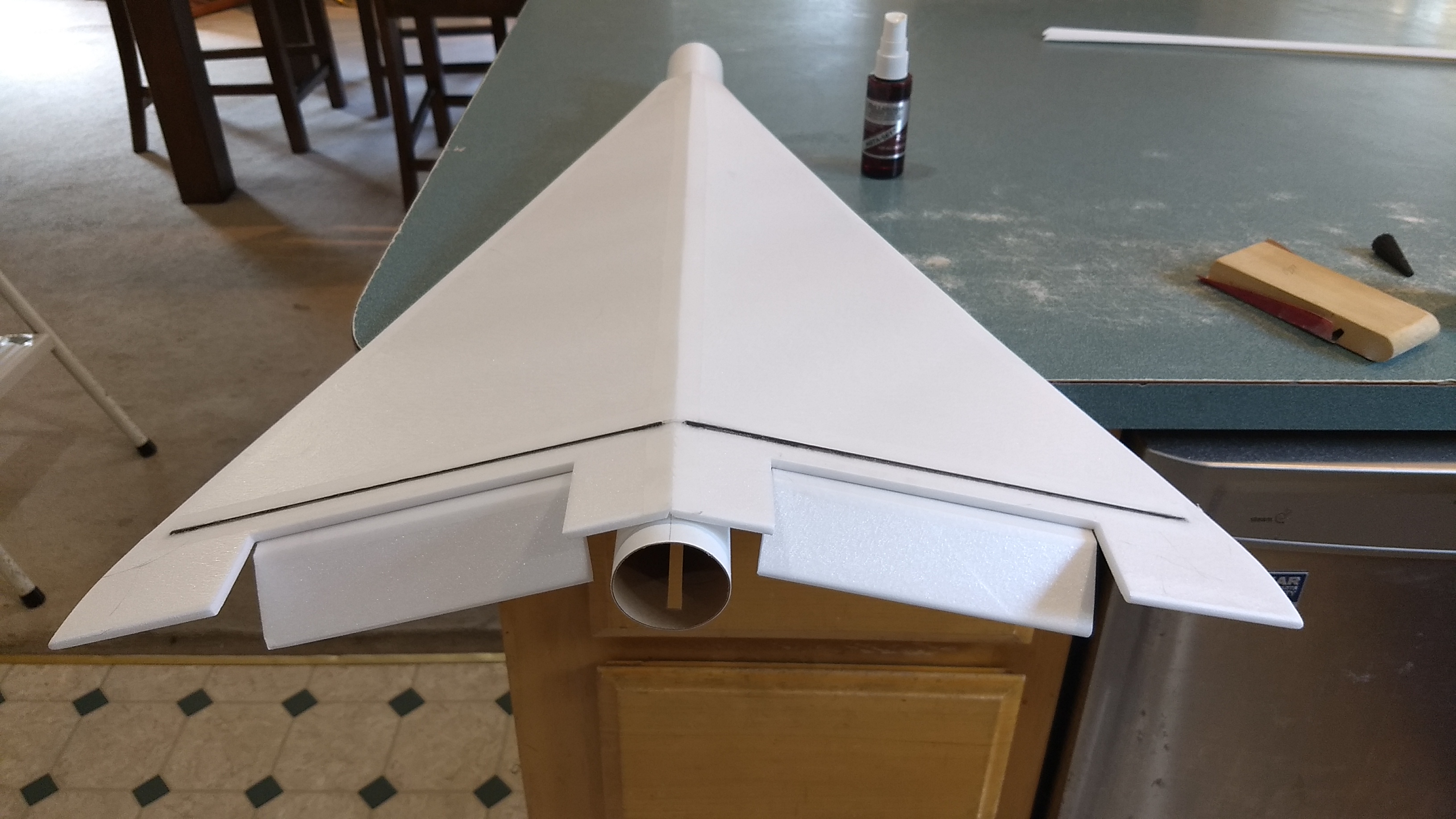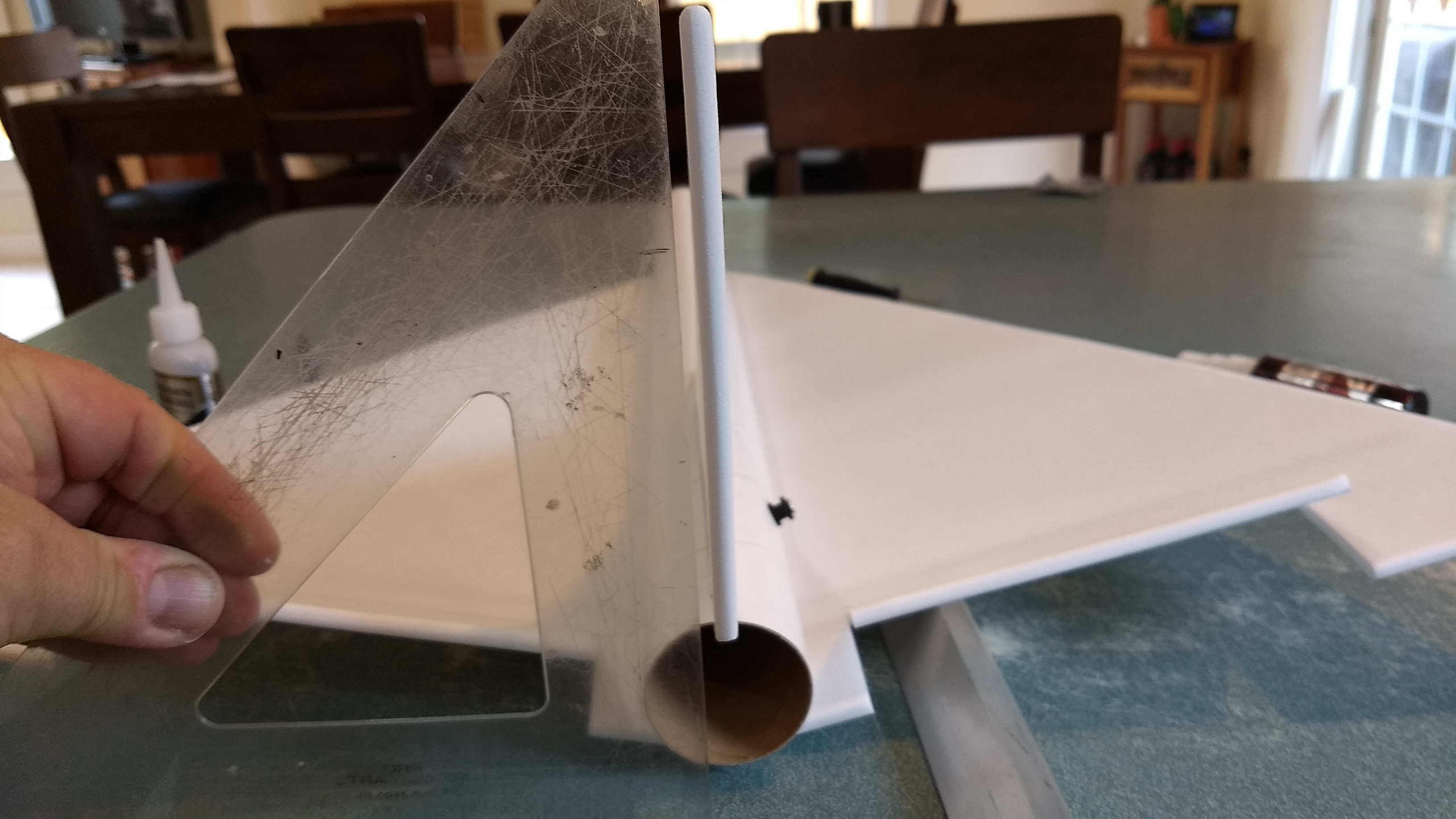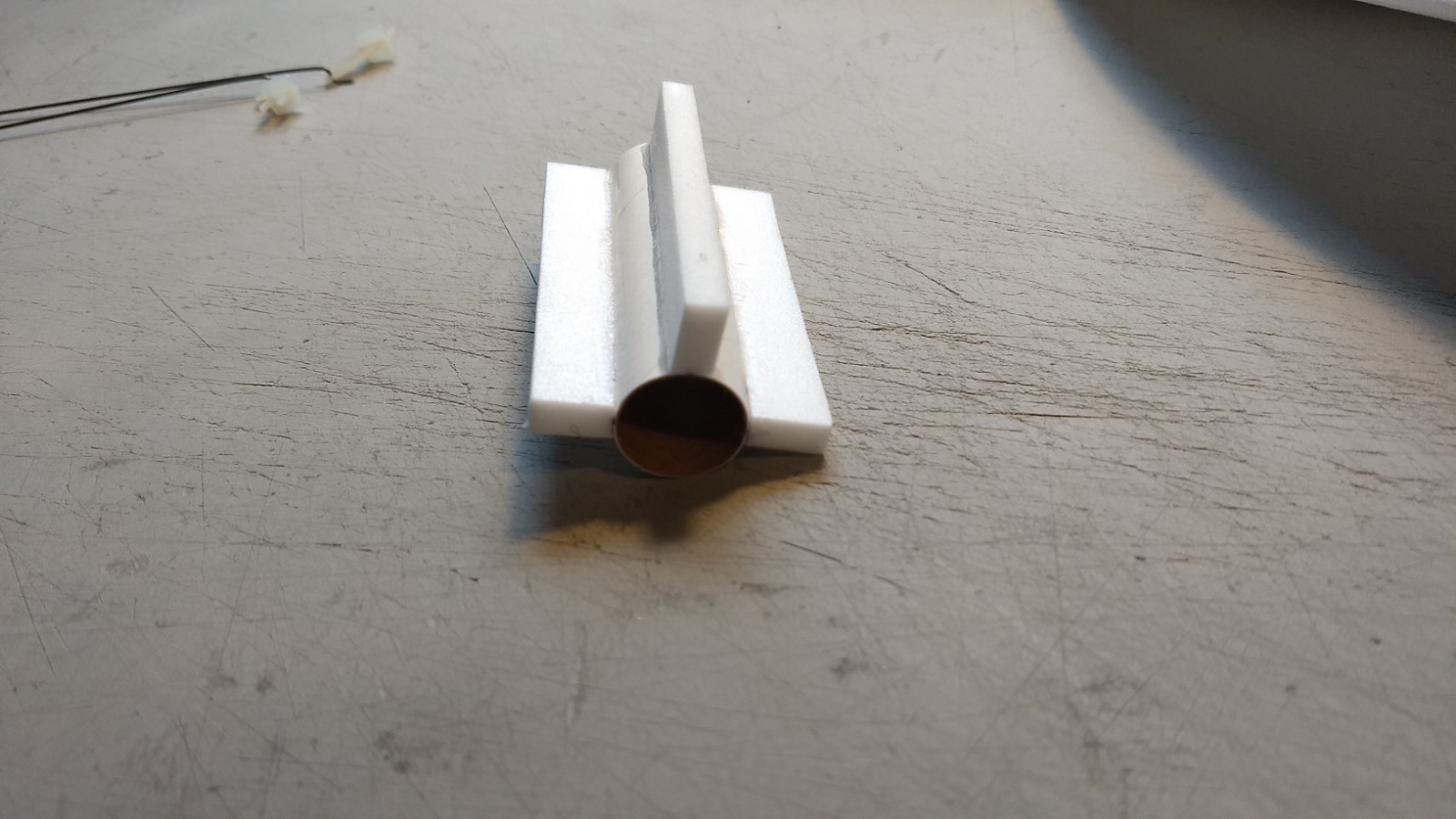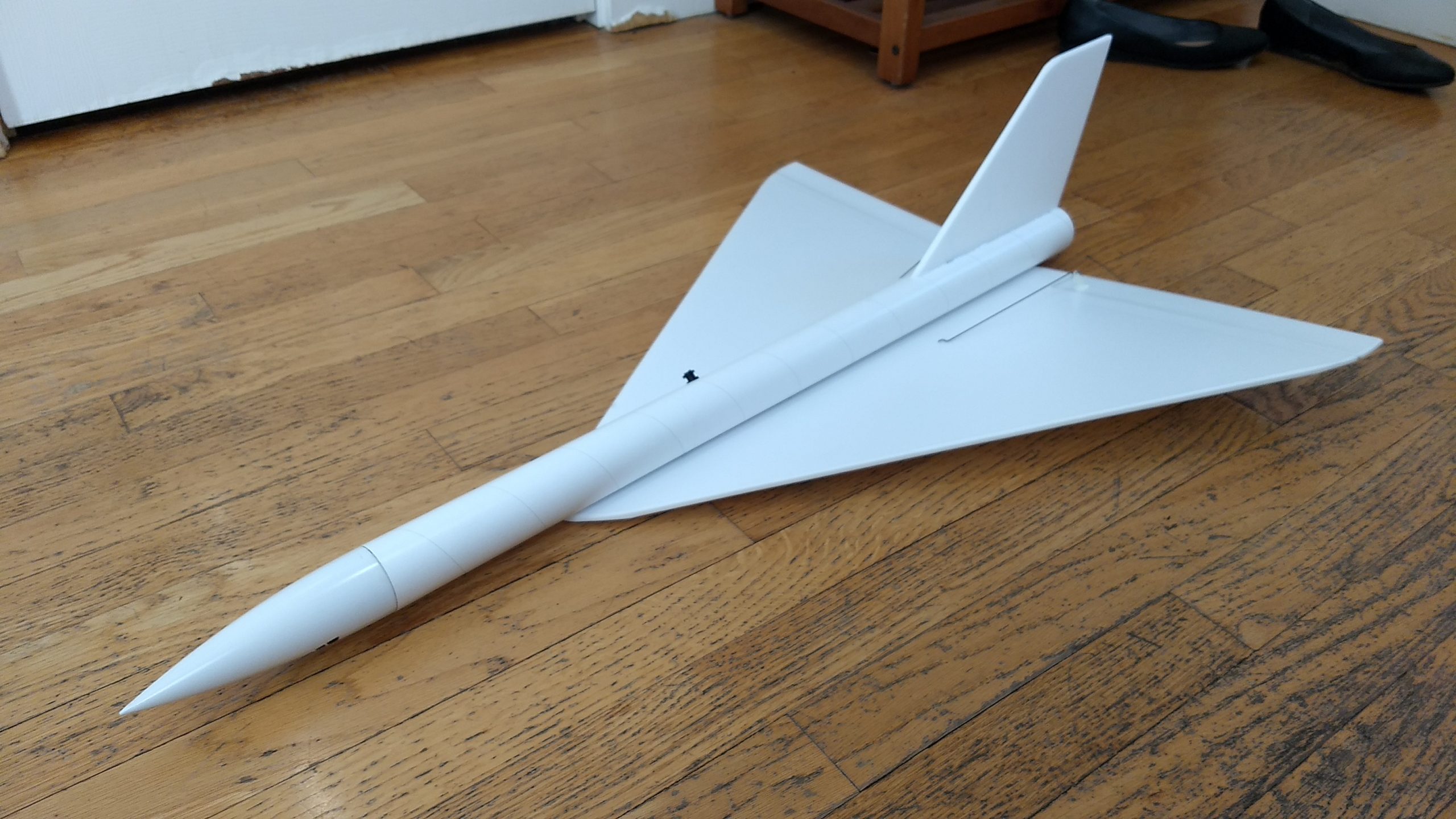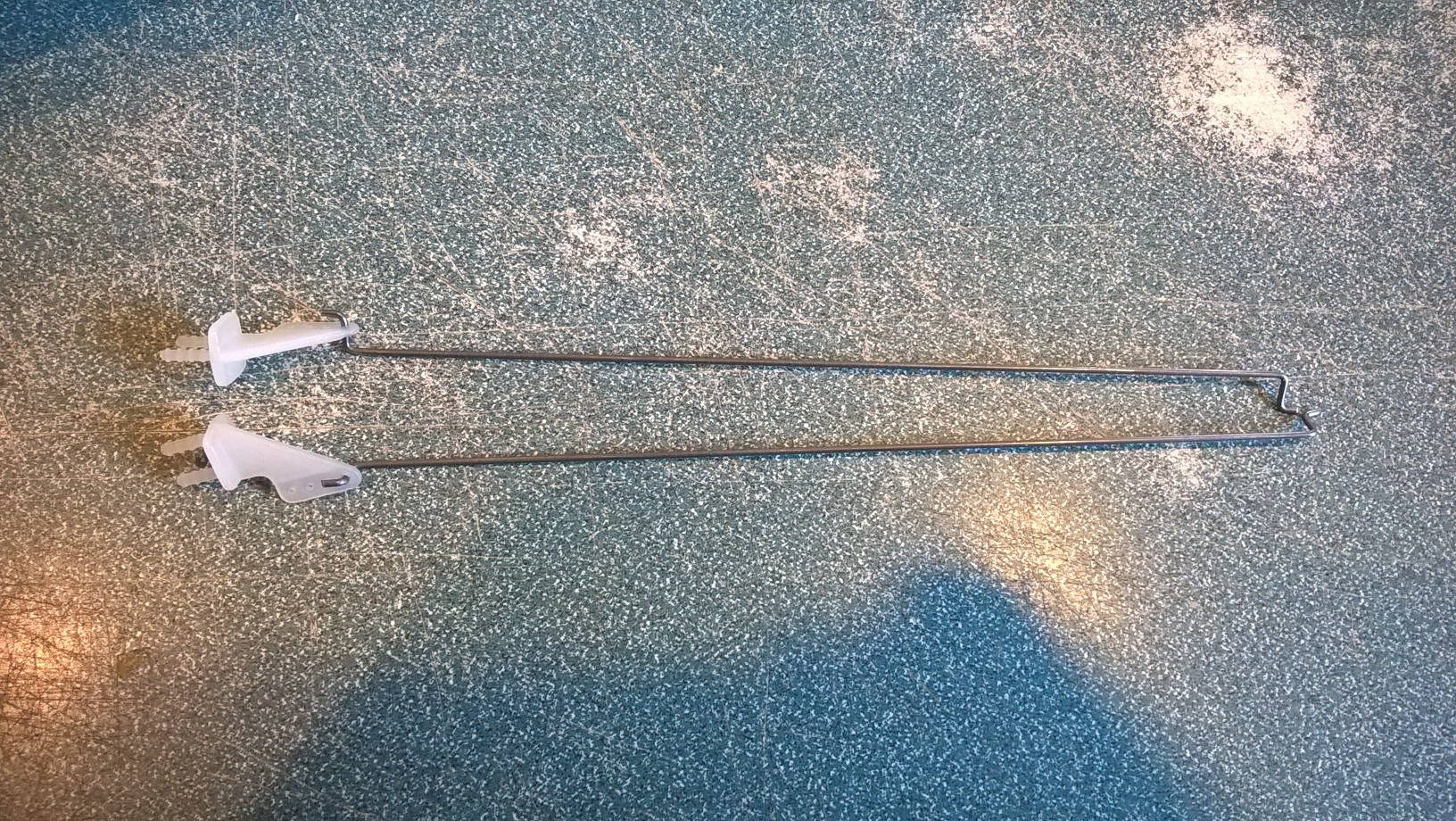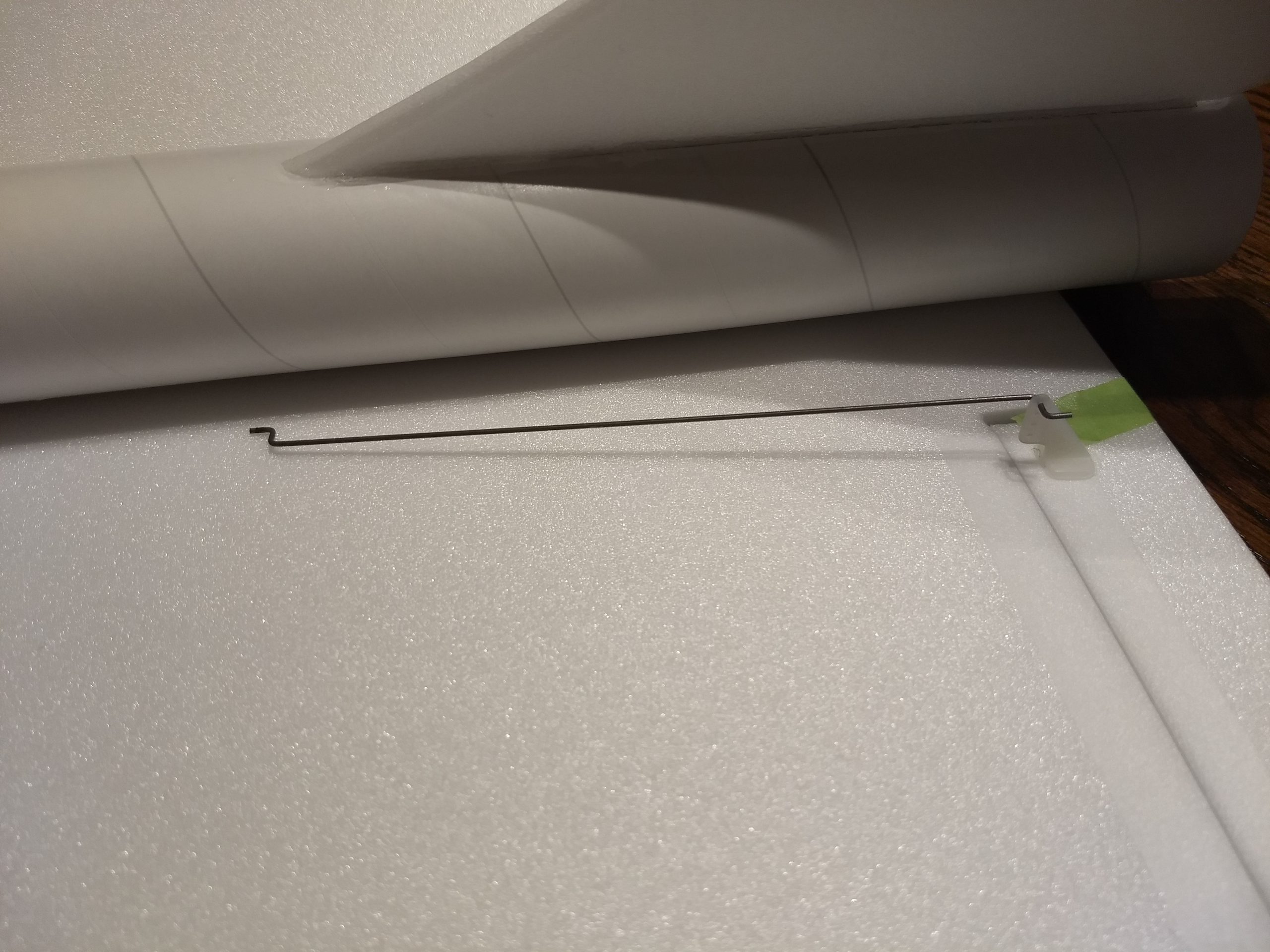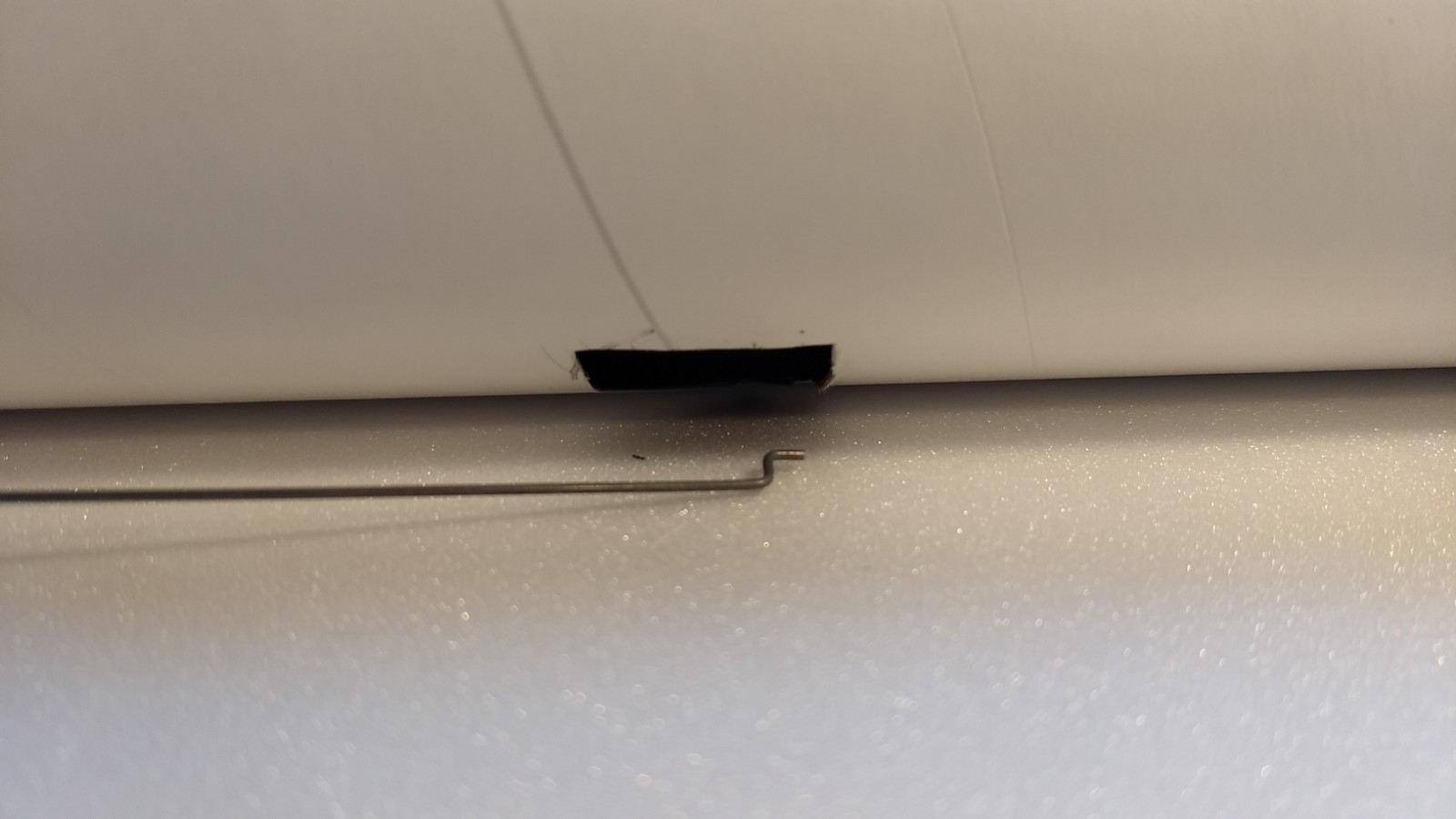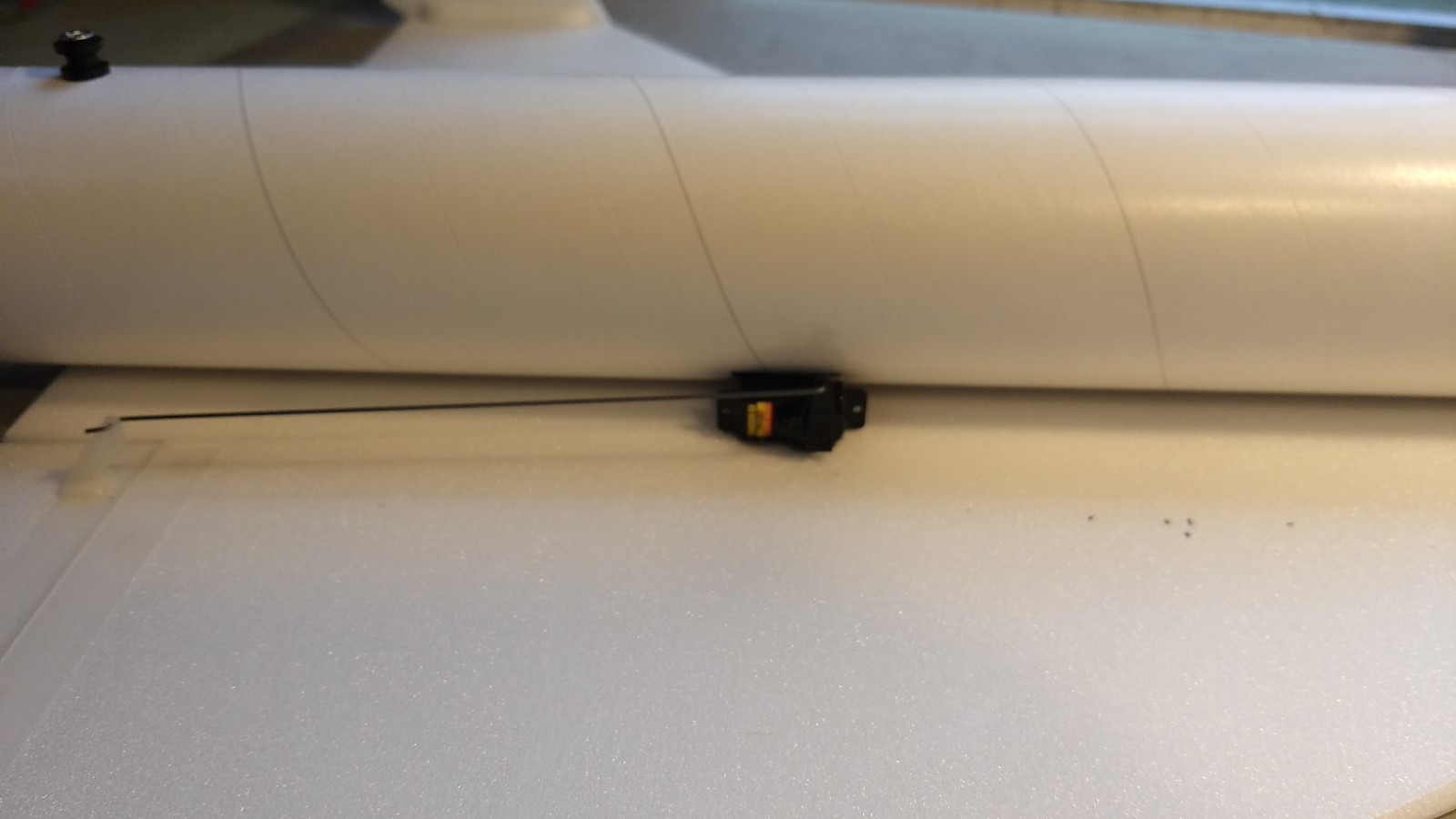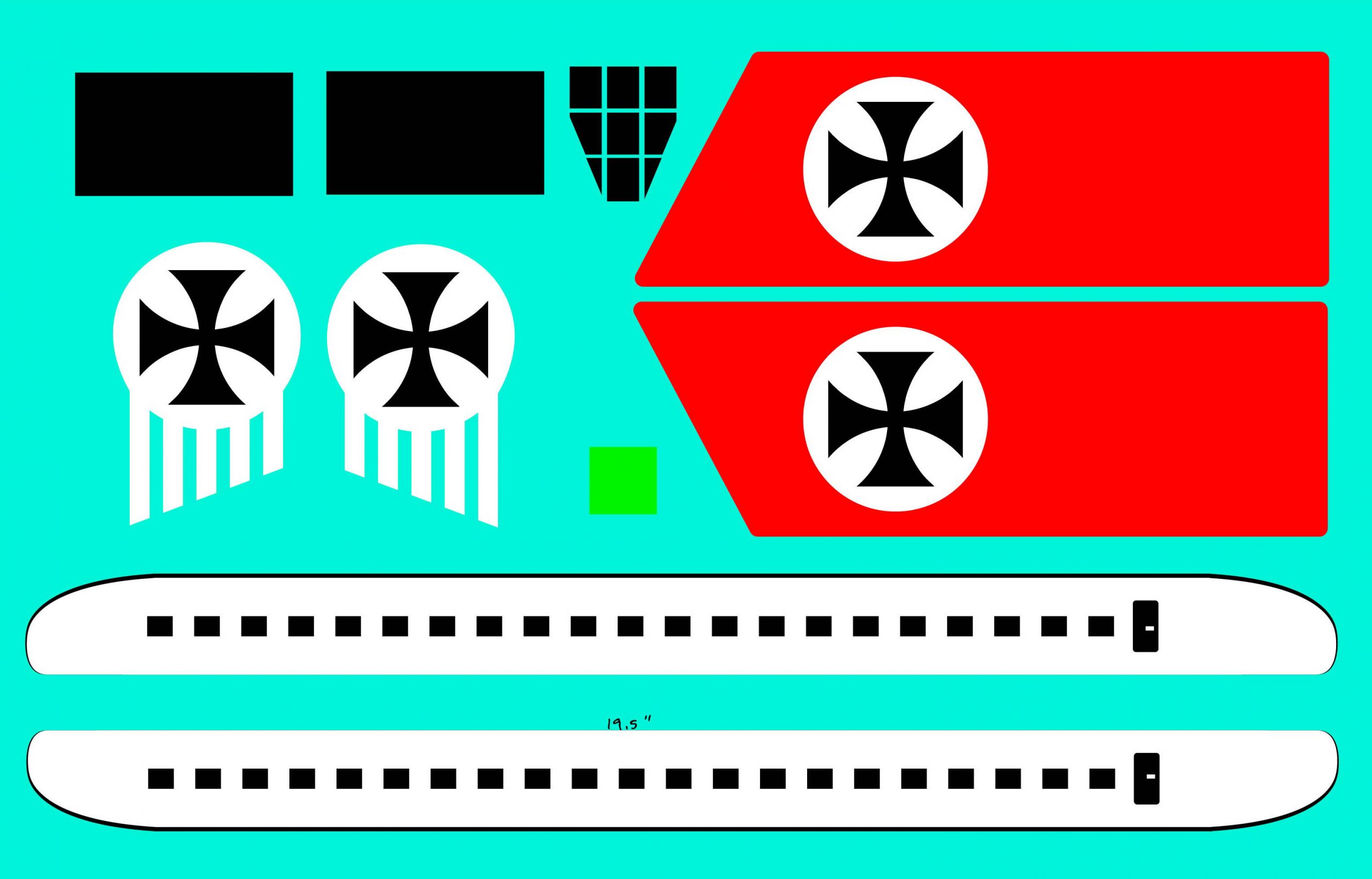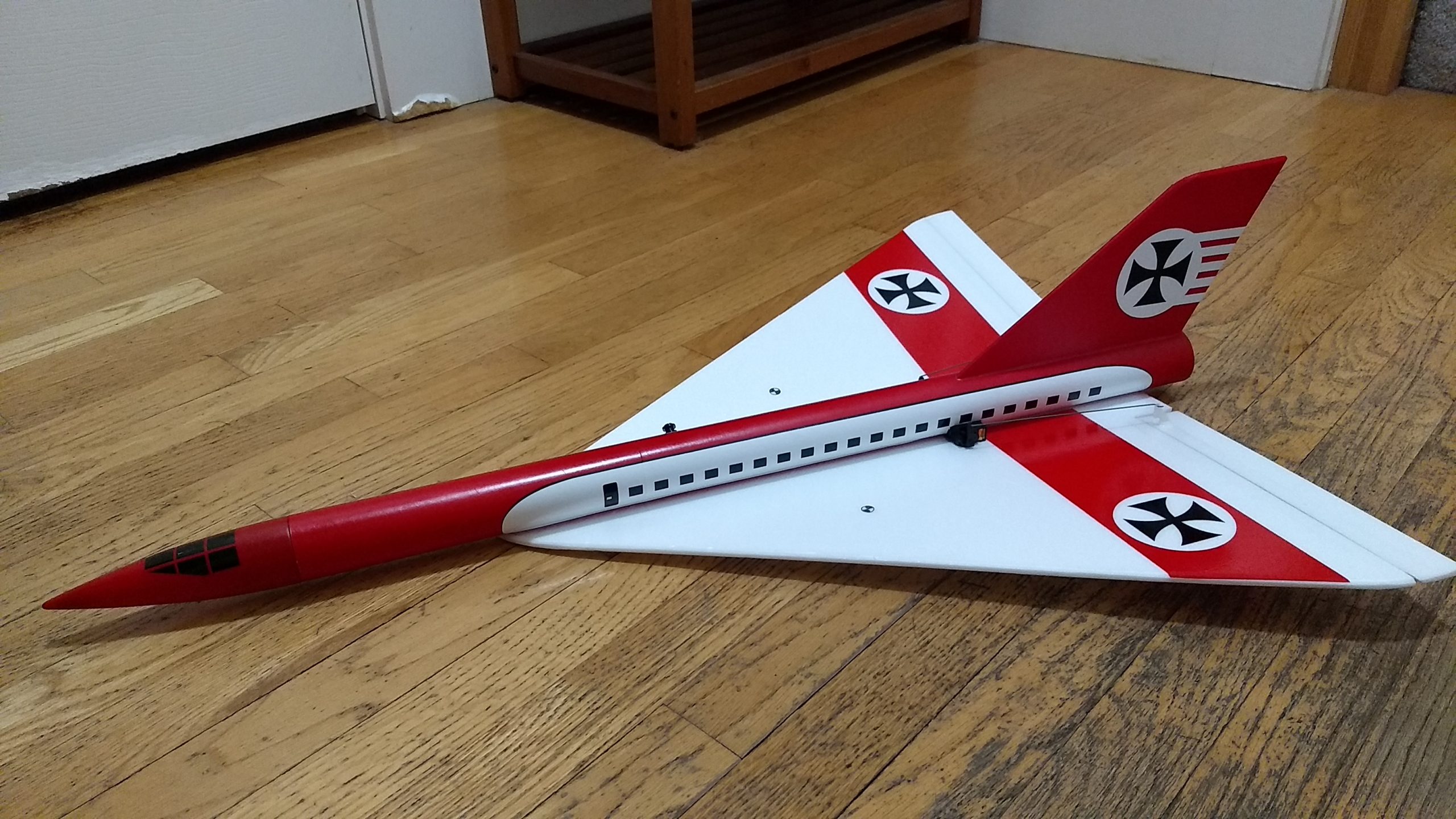
The Star Clipper RC Rocket glider kit is a great looking simple to build kit. It features a low mounted delta wing with dihedral, a plastic nose cone, white tubing for the body and 6mm depron wing and tail surfaces. It has a light wing loading giving it a very nice glide and the dihedral helps keep it level. Construction is very simple and takes about an hour and a half. Wing elevons are pre-hinged and spars are pre-installed. The body tube is pre-slotted for the tail surface and rail buttons are side mounted to avoid catching on the ground during landing. You will need two 10 gram type servos, two 16-18″ servo extensions, a receiver, and a small 500mah single cell lipo battery. You will need a transmitter with delta or elevon mixing. Decals for the Aurora Clipper kit will fit this model and are available HERE . Make sure to select the large size, not the “small” size.
Kit Specs: 30″ length, 23″ wingspan, 8 oz rtf, for 24mm E-6 reloadable motors.
CG location for rocket flight: 10.5″ measured forward from the trailing edge of the wing. This should be measured with a loaded rocket motor and battery installed as you would be ready to launch the model.
Please refer to the General Information Link above then read the instructions completely before starting assembly. The assembly photos are for general reference but may not include every step in the instructions. If you want hardcopy to work from, all you have to do is click/drag/select and copy all of the text below, open word and paste with “keep original format” and it looks exactly like it does online then you can print it.
Here is a build video for the Aurora Clipper which is identical construction wise to the Star Clipper kit
Unpacking your kit:
The kits are packed to protect them in shipping, but the contents are fragile so unpack carefully. Carefully cut the tape holding the tubes in the box, then unwrap/lightly cut the plastic wrap to free the tubes, the spar may be packed in the tubes and the baggie with the little parts and nose cone will be in the tubes as well. Carefully cut the tape holding the cardboard wing protector in the box and carefully remove it, don’t pull hard or bend it. Then carefully cut the tape holding the cardboard top piece to the bottom. There may be some sticky tape holding the cardboard to the bottom cardboard piece, carefully peel it being sure not to bend anything. Once the top cardboard is free you can see the foam wing/tail parts, there are little fragile pieces in here, so unwrap carefully. It may be best to use an exacto to lightly cut the plastic wrap and carefully remove it without cutting into the foam. Make sure everything is free before you remove the pieces to avoid breaking anything. Kits contain one or two scrap pieces for repairs if you damage anything in construction or flight, just cut and patch in a spare piece of the foam if needed using foam safe CA+.
Welcome to the world of rocket boosted radio control gliders. This is not a model for a novice RC pilot, but anyone who is comfortable with RC flying of a medium speed model should be fine. Read through the instructions, look at the photos and be sure you understand the step before commiting to cutting or glue.
StarClipper Rocket glider instructions
Identify all pieces, the kit should contain:
1 wing taped together
1 Nose Cone
1 vertical stabilizer
2 control horns w/pushrods
3 2.75″ long foam strips for centering the motor tube.
1 body tube or two body tubes with coupler
Motor mount
Velcro(for battery and rx/bec attachment)
2 Rail buttons with t nuts/screws
Lead weight
Spare depron
Notes before starting:
Reference to glue, CA, or CA+ means foam safe CA+, normal CA+ will melt the foam! Normally you need to use accelerator to get the CA to set on the foam since there is nothing for it to soak into and activate.
I bevel the edges of the foam surfaces before assembly which helps reduce drag and makes the model look nicer. I simply use a sharp Xacto knife and a metal straight edge to cut a 1/16-3/32″ wide 45 degree bevel on the edges on both sides of the wing and tail, on the curved areas I do it freehand and touch up with a little 320 grit sandpaper. If you decide to sand the edges, use a block and a VERY light touch and do small areas at a time to avoid the paper catching the foam and tearing it. Do any shaping before assembly.
Epoxy is not needed in this model. It is designed to be assembled ONLY with Bob Smith foam safe medium thick CA+ and accellerator or equivalent. Weight is critical and the model is designed for the thrust and flight loads. Weight in the rear end is bad and will require additional weight in the front of the model.
Assembly:
- Install the rail buttons at this time in the tube with the pre-punched holes. Insert a t-nut from the inside of the tube, then install a plastic washer, then the small collar, then the other washer and secure with the screw.
- If your kit came with two tubes and a coupler, glue the coupler into the tube with the rail buttons, it will go into the end without the slot, it will slide in till it hits the rail button, about 1.25″. Then glue the short tube onto the coupler making sure the small arrow marks are aligned on the two tubes, that will ensure the wing marks are properly aligned.
- The wing will be unfolded and mounted on the bottom of the body tube.
- Apply a squiggle of glue about 1/2 wide to the body tube wing line, the wing joint, and 1/2″ on either side of the wing joint.
- Lay the wing upside down onto the body tube making sure the rear of the wing is even with the “rear” mark on the body tube line and the front and rear longitudinal alignment lines are in line with the center taped wing joint. You want to be sure the wing makes full contact with the body tube and is set before you continue. Let the wing tips touch the table top when gluing the wing in place. This sets the dihedral. ***Note, if the forward rail button prevents you from laying the body tube on the table and keep the tail slot vertical, you can lay magazines under the body tube near the rail buttons to lift the tube up a bit, or you can lay the wing on the body tube line and tape the front and back in place so it won’t slip then flip the model right side up and prop up each wing tip the same amount keeping the vertical stab slot vertical till the glue sets.
- Once the glue has set flip the model over and apply some glue into the wing/body tube joint to make sure is is secure, I squeeze some glue about every inch along the joint on both sides and make sure it is set before continuing.
- Test fit the vertical tail into the slot and make sure it fits. Make sure the tail is straight with no warps, bend carefully by hand to straighten it if needed. Glue into the slot using foam safe CA+ making sure the tail is perpendicular to the wing and is straight. When gluing in the motor mount you can adjust the vertical stab position.
- Glue the foam centering strips on the motor mount tube. You will glue two strips on either side and one on the bottom. The lines were pre-marked but on some they are not perfectly aligned, use your eye and make sure they are approx as shown in the picture.
- You will apply a small piece of masking tape to friction fit the motor to keep it from falling out after boost. The rear ring on the reloadable casing will keep it from moving forward.
- Test fit the motor mount, You will need to sand the tabs glued on the motor tube so that it fits under the vertical fin tab and inside the tube on the sides. Do so carefully till it will insert fully and is recessed about 1/2″ from the rear of the body tube. Glue the motor mount into the rear of the model. Make sure you glue the tube so that the motor block is forward if installed.
- Glue each control horn/pushrod in place on the top of the control surfaces using the pre made holes. The control horn holes should be pointing toward the front of the model. Note the pushrods are closest to the center of the model and angle inward slightly. There is a left and right pushrod assembly. Repeat on the other side.
- Put some CA on the top of the control surface where the horn prongs stick through, this locks it in place
The basic construction is now complete.
Radio Installation
Note: Your radio needs to be configured for Delta mixing, this means that the servo arms will move the same direction during elevator stick movement and opposite for aileron stick movement. Connect your servos to the receiver one in the aileron connection and one on the elevator connection and apply power. Use a servo arm at least 9/16” long and with holes small enough that there won’t be slop with the pushrod wire when installed. I use the hole furthest out on the servo arm, to maximize movement. On some servos there are a long two-ended servo arm, you can trim off one end if needed to get sufficient length. Zero out any trim settings on the transmitter. The model once the motor has burned out is nose heavy and flying wings lose pitch authority when nose heavy so you want as much up elevator travel for trim/flare as possible.
- Connect a servo to each pushrod. If the pushrod is too tight, you can use twist an exacto knife in the servo arm hole to make it larger, but be careful and do not make it too large. Once connected, tape each servo in place so that the control surfaces are centered. Look at the model from the rear. Moving the transmitter stick back(up elevator) should move both elevons up. Moving the transmitter stick to the right should move the right elevon up and the left elevon down. If you can’t get the servo reversing to give you the right polarity try swapping aileron/elevator inputs to the receiver or turning the servos over and swapping the servo arms to the other side of the output shaft. If that is correct, continue.
- Mark where the servos will inset into the body tube on each side and cut a pocket to fit the servos so that the elevons will be neutral when the servo is inset into the body tube.
- Connect your servo extensions to each servo that are long enough to reach the front of the body tube and then route the leads forward and re-connect to the receiver.
- With the radio still on, put a small amount of glue on the servo, being careful not to get any near the output shaft. And set it in place in the pocket keeping the control surface centered. Do the same to the other side. Make sure the glue is set before continuing.
- Make sure the control surfaces are centered, use trims if needed. Now measure the control surface movement. Full elevator movement should be 5/8 in each direction, aileron movement should be 3/8″ in either direction. Since the model will be nose heavy, extra elevon movement helps to give sufficient authority during glide.
- If you have a flap/elevator mix you can program up elevator to a switch setting. The model needs approximately 1/4” of up elevon during glide. Alternatively if you have flight modes you can set up flight modes so that trim is unique to each mode, that way you can pre-set boost and glide trim for each mode using the xmitter trim tabs. If you can’t set the up elevator trim to a switch on your radio you’ll have to manually put in boost and glide trim which is hard to do while flying the model.
- Use the included velcro to attach the receiver and battery inside the nose cone or body tube. You may wish to tape the receiver and battery in place during balancing to determine the best location before securing them with the velcro to avoid adding extra nose weight. If your model comes out tail heavy move the components as far forward as they can go, if nose heavy move them back etc.
- The standard scheme shown with TWA or Star Clipper markings was unpainted except for the nose cone which can be painted with any type of paint, leave the rest of the model unpainted to save weight.
- If you decide to paint your model as in the pictures for the german theme, you just need to mask off the wing and servos and paint the body and tail and nose with either Krylon short cuts enamel or Testors small rattle can paint which will not melt the foam. Paint will add .25 to .5 ounces to your final weight.
- If you use the stickershock vinyl of any style, once applied, use a hair dryer on hot to soften the vinyl and press it down into the foam and cardboard surfaces and it will adhere very well. Make sure not to warp the foam especially on the vertical stab.
- You can use a fine line sharpie pen to add panel lines if desired.
- Insert your heaviest loaded rocket motor into the motor mount
- Support the model upside down at the balance point indicated for boost. Glue pieces of the included lead weight in the nose or tail as needed to balance it. Do not try to fly the model with it balancing it behind this point. The adage is, a nose heavy model flies poorly, a tail heavy model flies once.
Flying: See the General Information link at the top for flying instructions. Be ready on the first few flights to keep the model straight till you have the trims set perfectly for boost and glide.
- Install rail buttons in the tube with the pre-punched holes.
- Install the rail buttons, then Join tubes with the coupler keeping arrows aligned on the bottom wing line mark
- Glue the wing to the bottom of the body tube on the lines marked with the rear even with the “rear” of the body tube. The wing should be even with the rear of the body tube.
- Prop up each wingtip the same amount, 1.5″ to 2.25″ or so and glue the stab in place keeping it vertical.
- Glue the three foam tabs onto the motor mount on the lines marked.
- glue motor mount in place inset about 1/2″ then glue the stab tab to the motor mount making sure the stab is still vertical compared to the wing.
- Completed Airframe
- pushrods, one for each side
- Pushrods/control horns installed in top of control surface.
- Add glue to control horn prongs on bottom of control horn
- Servo pocket cut in body tube.
- Servos installed and glued into pocket.
- Alternate marking option
- Completed model with TWA Markings
- example of stickershock decals
- example of stickershock decals
- example of Stickershock Virgin Orbit Decals
- Example of Stickershock German airliner scheme
- Example of Air France Concorde style stickershock set.
- Example of custom Stickershock Spacex decals
